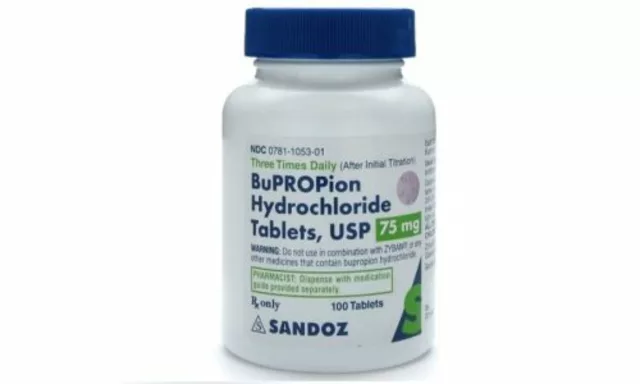AED Comparison Tool
Answer a few questions about your situation to get recommendations for the most suitable antiepileptic drugs.
Note: This tool is for informational purposes only. Always consult with your neurologist before making any medication decisions.
If you or a loved one have been prescribed Dilantin and you’re wondering whether there’s a better fit, you’re not alone. This article breaks down how Dilantin (phenytoin) measures up against the most frequently used alternatives, so you can weigh the pros, the cons, and the practical details before making a decision with your doctor.
What is Dilantin (Phenytoin) and how does it work?
Dilantin is a brand name for phenytoin, an older-generation antiepileptic drug (AED) that stabilizes neuronal membranes by inhibiting voltage‑gated sodium channels. By reducing the rapid influx of sodium ions during a nerve impulse, phenytoin dampens the hyper‑excitability that leads to seizures.
Phenytoin is typically prescribed for tonic‑clonic (grand‑mal) seizures and partial seizures that originate in the cerebral cortex. It’s available in oral tablets, chewable tablets, and an injectable form for acute management.
Key advantages and drawbacks of Dilantin
- Advantages
- Long track record: Used since the 1930s, with extensive clinical data.
- Effective for many patients who don’t respond to newer AEDs.
- Relatively inexpensive, especially in generic form.
- Drawbacks
- Narrow therapeutic window - blood levels must stay between 10‑20 µg/mL; too low = seizures, too high = toxicity.
- Non‑linear pharmacokinetics; small dose changes can cause big blood‑level swings.
- Numerous drug interactions (e.g., warfarin, oral contraceptives, many antibiotics).
- Side‑effects: gum hyperplasia, hirsutism, cerebellar ataxia, and rare Stevens‑Johnson syndrome.
Popular alternatives to Dilantin
Newer AEDs often offer simpler dosing, fewer interactions, and a more favorable side‑effect profile. Below are five of the most common alternatives, each introduced with its own microdata block.
Levetiracetam (brand name Keppra) is a broad‑spectrum AED that binds to the synaptic vesicle protein SV2A, modulating neurotransmitter release. It’s available in tablets, oral solution, and injectable form, and it has a predictable linear pharmacokinetic profile.
Valproic Acid (also sold as Depakote, Depakene) works by increasing brain GABA levels and blocking sodium channels. It’s useful for generalized seizures, absence seizures, and certain mood disorders.
Carbamazepine (brand name Tegretol) stabilizes the inactive state of sodium channels, similar to phenytoin, but with a more forgiving therapeutic range. It’s a first‑line choice for focal seizures.
Lamotrigine (brand name Lamictal) inhibits voltage‑gated sodium channels and reduces glutamate release, making it a good option for both focal and generalized seizures, as well as bipolar depression.
Phenobarbital is a barbiturate that enhances GABA‑mediated inhibition. It’s one of the oldest AEDs and remains useful in low‑resource settings due to its low cost.

Side‑by‑side comparison
| Drug | Primary Mechanism | Typical Indications | Common Side‑effects | Therapeutic Window | Drug Interactions |
|---|---|---|---|---|---|
| Dilantin (Phenytoin) | Blocks voltage‑gated Na⁺ channels | Tonic‑clonic, partial seizures | Gum hyperplasia, ataxia, rash | Narrow (10‑20 µg/mL) | Warfarin, oral contraceptives, many antibiotics |
| Levetiracetam | Modulates SV2A protein | Broad‑spectrum (partial, generalized) | Fatigue, irritability, dizziness | Wide (no routine level monitoring) | Minimal; watch for CNS depressants |
| Valproic Acid | Increases GABA, blocks Na⁺ channels | Generalized, absence, myoclonic seizures | Weight gain, tremor, hepatotoxicity | Moderate (50‑100 µg/mL) | Acetaminophen, carbapenems, lamotrigine |
| Carbamazepine | Blocks Na⁺ channels (state‑dependent) | Focal seizures, trigeminal neuralgia | Drowsiness, diplopia, rash | Moderate (4‑12 µg/mL) | Azole antifungals, macrolides, oral contraceptives |
| Lamotrigine | Inhibits Na⁺ channels, reduces glutamate | Focal & generalized seizures, bipolar | Skin rash (rare SJS), dizziness | Wide (no routine monitoring) | Valproic acid (raises levels), enzyme inducers |
| Phenobarbital | Enhances GABA‑A receptor activity | Focal seizures, status epilepticus | Sedation, cognitive slowing, dependence | Wide (15‑40 µg/mL) | Many enzyme inducers (e.g., phenytoin), oral contraceptives |
How to decide which AED is right for you
Choosing an antiepileptic isn’t just about side‑effects; it’s a balance of several factors:
- Seizure type - Some drugs work best for certain patterns. Phenytoin shines for focal seizures, while valproic acid covers a broader range.
- Age and comorbidities - Children often avoid phenytoin due to bone growth concerns; elderly patients may prefer drugs with less sedation.
- Drug interaction profile - If you’re on anticoagulants, oral contraceptives, or HIV meds, a drug with fewer interactions (like levetiracetam) may be safer.
- Monitoring burden - Phenytoin and carbamazepine require regular blood‑level checks; levetiracetam and lamotrigine typically do not.
- Cost and insurance coverage - Generic phenytoin remains cheap, but newer agents may have better formulary placement.
Discuss these points with your neurologist. A shared‑decision approach ensures the chosen drug aligns with your lifestyle and health goals.

Practical tips for anyone switching from Dilantin
- taper slowly - abrupt stop can trigger rebound seizures. Typical taper spans 2‑4 weeks, guided by blood‑level trends.
- monitor levels - even when moving to a drug that doesn’t need routine checks, keep a baseline phenytoin level to confirm it’s dropping safely.
- watch for new side‑effects - the first few weeks on a new AED are critical; report rash, mood changes, or excessive drowsiness promptly.
- update all providers - ensure your primary care doctor, pharmacist, and any specialist have the new medication list to avoid hidden interactions.
Frequently Asked Questions
Can I take Dilantin with alcohol?
Alcohol can increase phenytoin’s sedative effects and may raise blood levels, heightening toxicity risk. Most clinicians advise limiting or avoiding alcohol while on Dilantin.
Why do I need regular blood‑level tests for phenytoin?
Phenytoin follows non‑linear kinetics, meaning a small dose change can cause a large swing in blood concentration. Staying within the therapeutic window (10‑20 µg/mL) minimizes seizures and side‑effects.
Is Levetiracetam safe for pregnant women?
Current data suggest levetiracetam carries a lower teratogenic risk than phenytoin or valproic acid, but it’s still classified as Category C. A neurologist should weigh benefits against any potential fetal risk.
What causes gum overgrowth with Dilantin?
Phenytoin stimulates fibroblast activity in the gingival tissue, leading to hyperplasia. Good oral hygiene and regular dental cleanings can mitigate the problem.
Are there any natural alternatives to phenytoin?
Lifestyle measures-adequate sleep, stress reduction, and avoidance of seizure triggers-support seizure control, but they don’t replace prescription AEDs. Always discuss any supplement or herbal product with a doctor because of possible interactions.
Remember, every seizure disorder is unique. The best medication is the one that controls seizures with the fewest burdens for you personally. Use this comparison as a conversation starter with your healthcare team.




Keep your focus on the big picture of seizure control. Dilantin offers a proven track record that many patients value. Its mechanism of sodium channel blockade is well understood. The therapeutic window is narrow but manageable with regular monitoring. Modern labs provide precise phenytoin level assays. You can pair Dilantin with lifestyle adjustments for optimal outcomes. Consider the pharmacokinetic profile when adjusting doses. Small dose changes can produce large serum fluctuations. That is why steady dosing schedules are vital. Interaction awareness empowers you to avoid adverse events. For example warfarin metabolism can be enhanced. Oral contraceptives may have reduced efficacy. Gum hyperplasia can be mitigated with dental hygiene. Staying proactive with your neurologist builds confidence. Embrace the collaborative journey toward seizure freedom.
Stick to the plan and push forward! You have the power to adjust your regimen with guidance from your doctor. Don't let fear hold you back, make decisive moves.
Look at the details and weigh the options. Keep track of side effects and talk to your neurologist regularly.
Oh great another list of drugs like we needed more choices, because picking a seizure pill is exactly my weekend hobby.
Concise point. Side effects matter. Monitoring is essential.
It is your duty to prioritize health over convenience. Ignoring medical advice shows a lack of responsibility. Choose wisely and stay accountable.
Life is a series of choices, each pill a fork in the road :) Consider the broader impact beyond the seizure.
I've seen countless patients settle for cheap shortcuts, but we deserve the best science our nation can offer. Embrace proven protocols, demand quality, and stop compromising on care.
Switching meds can be tricky keep your doctor in the loop and watch for any new symptoms also remember to schedule follow‑up labs it helps